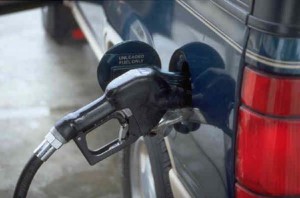
By compromising at 56 mpg, the White House hopes to develop consensus for new fuel economy standards.
While consumers may be demanding big increases in automotive fuel economy, the Obama Administration has apparently bowed to industry pressure as it prepares to set new mileage standards reaching out to 2025.
The White House reportedly has advised automakers and industry trade groups that it will look to boost the Corporate Average Fuel Economy, or CAFE, standard to 56.2 mpg. That’s a big jump from the 37.5 mile per gallon target now in place for 2016, but significantly lower than the 62 mpg goal that the Environmental Protection Agency had originally been considering for the next bump in CAFE.
The roughly 10% cut in the 2025 standard now under consideration reflects the changing political fortunes in Washington; indeed, the Republican-controlled House of Representatives has largely dismissed concerns about global warming, one of the factors that had led the EPA to consider a 62 mpg figure. Automakers, meanwhile, have been loudly arguing that this number could price most new car buyers out of the market and lead to sharp declines in industry earnings — and jobs.
But even the GOP and auto industry officials seem to recognize the mood of an electorate frustrated by this year’s near-record run-up in fuel prices — and worried by forecasts gas might soon nudge $5 a gallon.
So, there’s been some unexpected bipartisan support for a big CAFE increase, a group of former EPA administrators, governors and even some Republican House members, last week notifying the White House of their support for reaching at least 60 mpg – which would work out to a 6% annual increase in fuel economy.
But the auto industry has been lobbying heavily to pare back that target, citing studies that question both the effectiveness and, in particular, the cost of reaching to 60 mpg mark.
Earlier this month, Ann Arbor, Michigan’s Center for Automotive Research, or CAR, released a new report warning that meeting that standard could raise the price of a typical vehicle by as much as $9,000, declaring, “the risk is serious,” and could also result in the loss of 5.5 million annual new car sales and the subsequent loss of 265,000 jobs in the U.S. automotive manufacturing sector.
But a separate study, by the Boston Consulting Group, countered that the cost of reaching 62 mpg would be closer to $2,000 per vehicle, a figure that would be readily made up by the average buyers through savings on fuel.
A 56.2 mpg goal would still mean an annual 5% increase in fuel economy. The industry has been pushing for a 47 mpg target, which would be closer to 3% annually through 2025.
Exactly how to get there remains to be seen. Most observers expect that whatever standard is eventually improved there will likely be the need for downsizing both vehicles and powertrains. There is the possibility that makers will be able to continue relying on the time-tested internal combustion engine, turning to advanced turbocharging, direct injection, and new gearboxes to squeeze more miles out of every gallon.
But the higher the figure, warn experts like Ford’s global product development chief Derrick Kuzak, “the more likely” the industry will have to migrate to various forms of electrification, from so-called “mild” hybrids to full battery-electric vehicles.
The White House has been quietly discussing its modified CAFE proposal with a variety of interested parties, including automakers, the United Auto Workers Union and various lawmakers, hoping to get the new standards onto the fast track.
“We continue to work closely with a broad range of stakeholders to develop an important standard that will save families money and keep the jobs of the future here,” White House spokesman Clark Stevens told the Washington Post. “A final decision has not been made, and as we have made clear we plan to propose that standard in September.”
